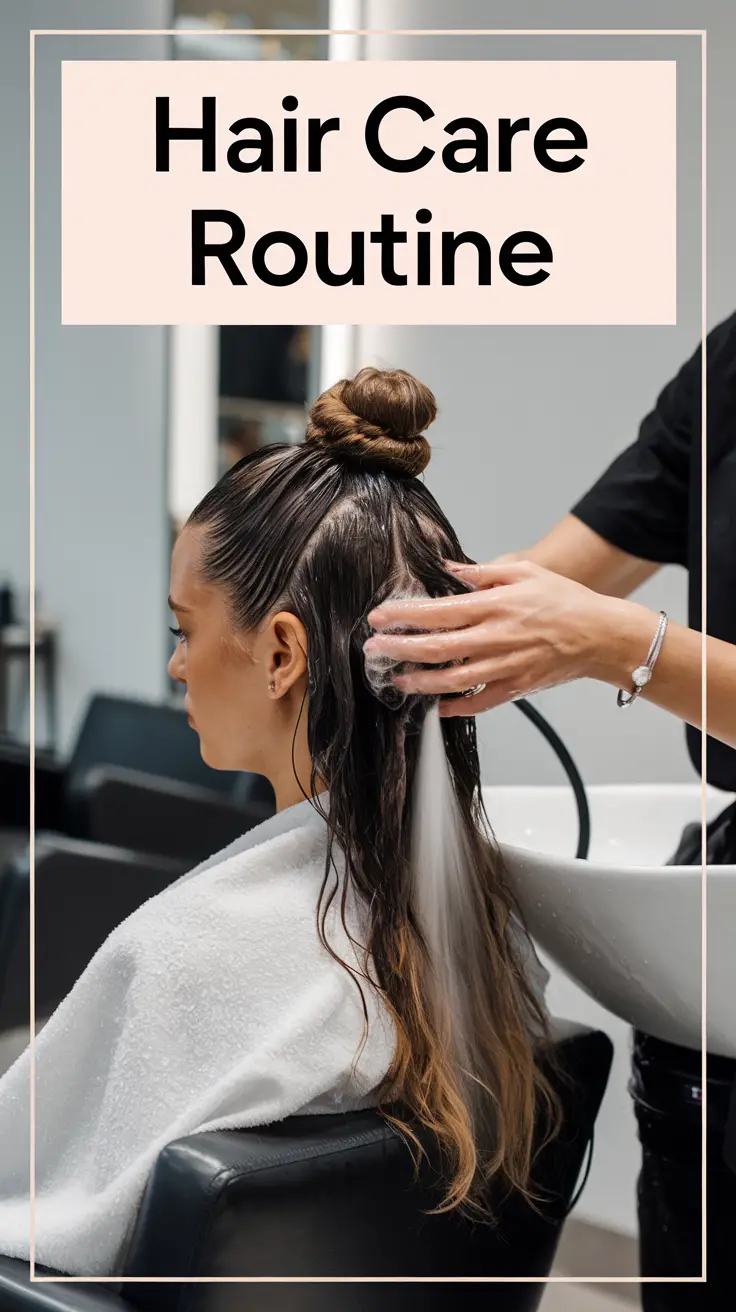Hair Care Routine: A Complete Guide to Healthy, Vibrant Hair
Achieving healthy, vibrant hair requires understanding your hair’s unique needs and tailoring your routine accordingly. Here, I’ll guide you through the essentials of building a personalized hair care regimen, addressing different hair types, common challenges, and practical solutions.
Understanding Your Hair Type
The first step to an effective hair care routine is identifying your hair type. Here’s an overview:
| Hair Type | Characteristics |
|---|---|
| Straight | Naturally smooth; oil travels easily from scalp to ends, often leading to greasiness. |
| Wavy | Loose, tousled curls; can be prone to frizz and dryness. |
| Curly | Defined curls; typically dry and requires consistent hydration. |
| Coily | Tight curls or zigzag patterns; highly prone to dryness and shrinkage. |
Building an Effective Hair Care Routine

1. Cleansing
Cleansing removes dirt, oil, and buildup from the scalp and hair. The frequency of washing depends on your hair type:
| Hair Type | Washing Frequency |
| Straight/Oily | Every 1-2 days |
| Wavy/Curly | 2-3 times per week |
| Coily | Once a week or bi-weekly |
Pro Tips:
- Use sulfate-free shampoos to maintain natural oils.
- If you experience dandruff, opt for a shampoo with active ingredients like zinc pyrithione.
2. Conditioning

Conditioning is essential for restoring moisture and improving manageability. Apply conditioner to mid-lengths and ends, avoiding roots to prevent greasiness.
- Regular conditioning after every wash is crucial.
- Deep conditioning treatments once a week can provide intense hydration.
3. Moisturizing and Sealing
For dry or textured hair, moisturizing and sealing help retain hydration:
- Moisturizers: Use leave-in conditioners or hydrating sprays.
- Sealants: Apply natural oils (argan, jojoba, or coconut) to lock in moisture.
4. Detangling

Detangling reduces breakage and makes styling easier:
- Use a wide-tooth comb or a detangling brush.
- Start detangling at the ends and work upward.
- Detangle damp hair for smoother results.
5. Styling and Protection
Styling tools can damage hair, so take precautions:
- Always use a heat protectant spray before using styling tools.
- Opt for lower heat settings to minimize damage.
- Limit heat styling to special occasions.
For everyday styling:
- Try protective hairstyles such as braids or buns.
- Use silk or satin accessories to prevent friction.
Lifestyle and Seasonal Adjustments

Lifestyle Factors
Healthy hair begins with a healthy lifestyle:
- Diet: Incorporate biotin-rich foods, omega-3 fatty acids, and vitamin E.
- Hydration: Drink at least 8 glasses of water daily.
- Stress Management: Practice mindfulness to reduce stress-related hair loss.
Seasonal Adjustments
- Winter: Focus on deep hydration to counteract dryness from indoor heating.
- Summer: Use UV-protectant sprays to shield your hair from sun damage.
Common Mistakes to Avoid
- Overwashing your hair, which strips natural oils.
- Using the wrong products for your hair type.
- Brushing wet hair aggressively, causing breakage.
- Ignoring scalp health, leading to buildup or irritation.

Customizable Routine
Use this template to create your personalized hair care routine:
| Step | Frequency | Recommended Products |
| Cleansing | 2-3 times per week | Sulfate-free shampoo |
| Conditioning | After every wash | Moisturizing conditioner |
| Deep Conditioning | Weekly | Repair masks with keratin or oils |
| Moisturizing | Daily for dry hair | Leave-in conditioner, natural oils |
| Styling | Occasionally | Heat protectant spray |
Conclusion
A well-structured hair care routine is key to maintaining healthy, vibrant hair. By understanding your hair type, choosing the right products, and adopting good habits, you can prevent common issues like dryness, breakage, and frizz. Remember to adapt your routine to seasonal changes and your unique lifestyle. Consistency and patience are essential—your hair will thank you for the effort! Start today by assessing your hair’s needs and implementing these tips for a noticeable transformation.
FAQs
1. How often should I use hair masks?
Use hair masks once a week or as needed for deep hydration.
2. What’s the best way to protect hair from heat styling?
Always use a heat protectant and set tools to a lower temperature.
3. Are there natural remedies for improving hair texture?
Yes, try aloe vera, coconut oil, or rice water rinses.
4. How do I prevent split ends without frequent trimming?
Moisturize regularly and avoid excessive heat styling.
5. Can hair products cause scalp issues?
Yes, product buildup can irritate the scalp. Use clarifying shampoos occasionally.
